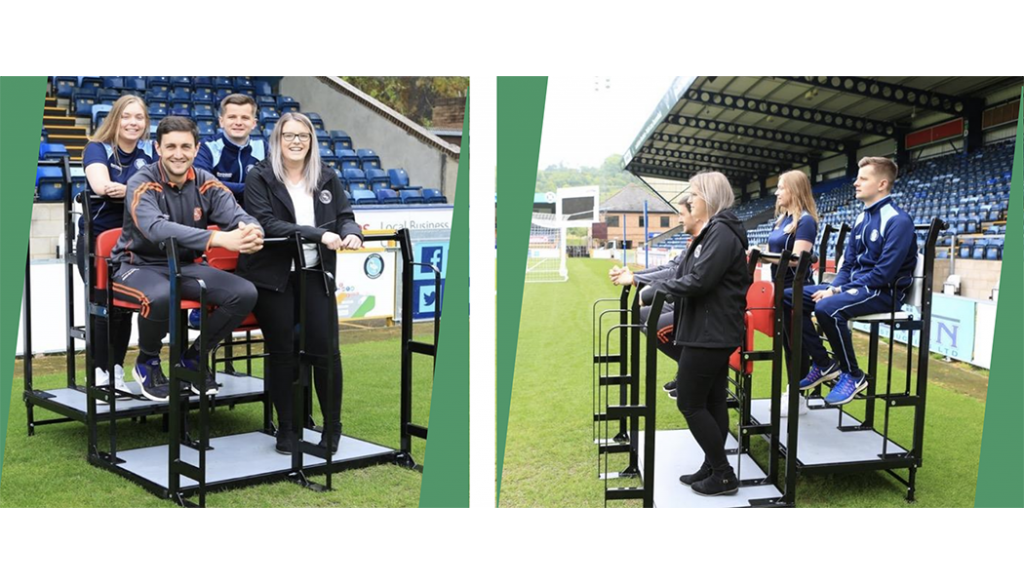2020 Seating: English Football, Safe Standing And The General Election…
December 9, 2019
The three main political parties in this week’s United Kingdom general election do not agree on a particularly large number of issues, however there is one issue that unifies all three groups – safe standing at football matches.
All three have included introducing safe standing at football stadia in their election manifestos, so it appears the issue could finally be set to see a resolution.
After years of fan campaigning for standing, why now?
There are two main reasons. Firstly, safe standing is deemed to be popular and once one party had promised it the others probably felt they had to do likewise, just to ensure that they weren’t going to lose votes as a result. Secondly, since the installation of “dual-purpose seats” i.e. seats with rails at Tottenham and barrier seats at Wolverhampton Wanderers there has been standing at Premier League matches anyway.
So, if standing is here already, what are these parties promising to introduce?
That’s not clear, however the new installations at Tottenham and Wolves are, in practice, seating areas where everyone stands. After the election, these fans will be deemed to be standing in designated standing areas.
What will change when the next Government introduces safe standing?
A club such as West Bromwich Albion, who had their application for rail seating rejected, will presumably be able to re-submit the same application and have it approved.
It may be that clubs can introduce a standing-only area i.e. with no seats at all, but this has many inherent issues.
Campaigners have always hoped that by reintroducing standing more fans will be allowed onto the same terraces i.e. an increased density of fans on the terraces. The hope is that ticket prices can be reduced because clubs will be able to sell more tickets.
Before capacities can be increased and more fans admitted, every other relevant issue must be checked to ensure that access and egress, concourse sizes, toilets and other key aspects of the stadium operation can all cope with more people. If not, the required additional investment may be prohibitive.

However, the world has moved on since fans were crammed onto standing terraces in the 1970s. The terraces built for all seated stadia are steeper than terraces designed for standing, which means that additional guardrails are essential if standing is going to be allowed onto terraces designed for seating.
There were crushes and crowd surges in the 70’s which would be even more dangerous on today’s steeper terraces. Barriers would mitigate these risks and crowd numbers would have to be carefully managed to ensure that there is no over-crowding. Barriers would need to be high enough to be perfectly safe.
Currently seats with rails and barrier seats are 800 / 900mm high which is safer than no barrier at all but not as safe as it is possible to be – that would require a fully compliant 1.1m guardrail. Only the 2020 seat delivers this.
Are there any other considerations associated with standing?
Given that almost every part of our lives has been rebuilt so that disabled and vulnerable people can access the same buildings as their more able-bodied counterparts, it would be an odd move to go back to standing-only sections of stadia.
Creating standing-only terraces would be a retrograde step that would force some groups of fans to be spilt up or have to relocate to other areas, as some of them can’t stand for 90 mins or are too short to see, if others are standing.
Post-election, standing areas in stadia without some form of seating is therefore possible but very unlikely, particularly as this is not currently allowed for any UEFA-organised match. It is more likely that clubs will follow the lead of Tottenham and Wolverhampton by introducing “dual-purpose” seating.
If clubs install the rail seats or seats with barriers then everyone in that section will have to stand for the whole match or move to another part of the stadium to sit in a conventional seat – however, this is a potential problem for some away fans as don’t have the choice to go elsewhere in the stadium and therefore will always be disadvantaged.
Clubs can avoid these dilemmas by installing 2020 seats which give the best of all options to everyone. Whereas fans using the seats with rails or barriers are expected to stand, installing 2020 seats will allow fans to sit or stand as and when they feel like it. Fan surveys have highlighted that most fans don’t want to stand all of the time and the 2020 seats allows each fan to dictate how long they are on their feet.
The 2020 seat is first and foremost a seat that most fans will sit on for some of the time but, importantly it allows fans to safely stand without impacting the enjoyment of others.
2020 seats can be seen at Adams Park, Wycombe Wanderers FC, Easter Road, Hibernian FC and can be researched at www.2020seat.co.uk


